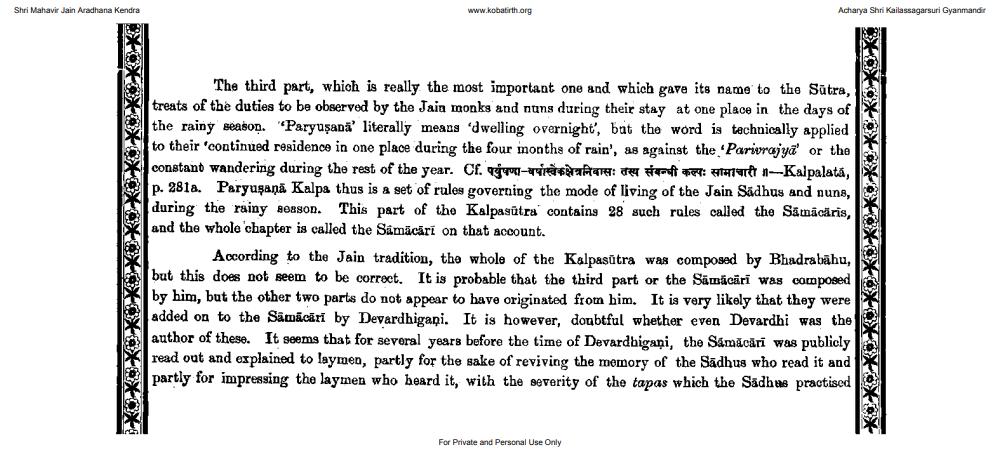________________
Shri Mahavir Jain Aradhana Kendra
www.kobatirth.org
Acharya Shri Kailassagarsuri Gyanmandir
The third part, which is really the most important one and which gave its name to the Sutra, treats of the duties to be observed by the Jain monks and nuns during their stay at one place in the days of the rainy season. "Paryusana' literally means 'dwelling overnight, but the word is technically applied to their 'continued residence in one place during the four months of rain', as against the 'Parivrajya' or the constant wandering during the rest of the year. Cf. पर्युषणा- वर्षास्वेक क्षेत्रनिवासः तस्य संबन्धी कल्पः सामाचारी | Kalpalata, p. 281a. Paryusana Kalpa thus is a set of rules governing the mode of living of the Jain Sadhus and nuns, during the rainy season. This part of the Kalpasütra contains 28 such rules called the Sämäcäris, and the whole chapter is called the Samäcäri on that account.
According to the Jain tradition, the whole of the Kalpasūtra was composed by Bhadrabahu, but this does not seem to be correct. It is probable that the third part or the Sämäcäri was composed by him, but the other two parts do not appear to have originated from him. It is very likely that they were added on to the Samācāri by Devardhigani. It is however, doubtful whether even Devardhi was the author of these. It seems that for several years before the time of Devardhigani, the Sámacari was publicly read out and explained to laymen, partly for the sake of reviving the memory of the Sadhus who read it and partly for impressing the laymen who heard it, with the severity of the tapas which the Sadhus practised
For Private and Personal Use Only




